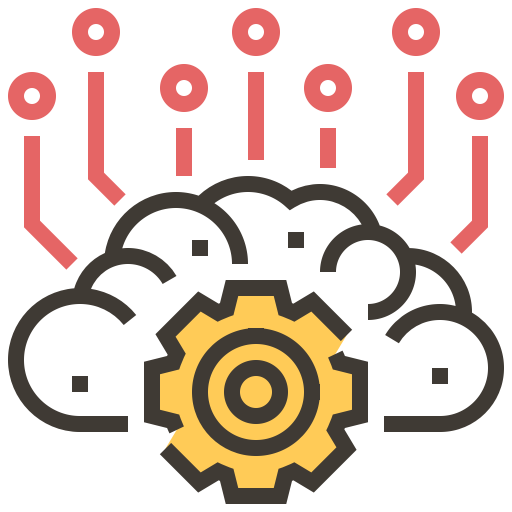Introduction
Progressive Web Apps (PWAs) are an innovative approach to web development that combines the best web and mobile apps. By leveraging modern web capabilities, PWAs provide users with a seamless, fast, and reliable experience, regardless of network conditions. As businesses strive to enhance user engagement and satisfaction, PWAs have become increasingly important in the digital landscape.

Evolution of PWAs
The journey of PWAs began in the mid-2010s when Google introduced the concept to bridge the gap between web and mobile applications. Early adopters saw the potential of PWAs to offer app-like experiences without the need for installation from app stores. Over the years, significant milestones, such as the introduction of service workers and advancements in browser capabilities, have propelled PWAs into the mainstream.
Current State of PWAs
Today, PWAs are embraced across various industries, from e-commerce to media. Key features of modern PWAs include offline functionality, push notifications, and home screen access, which contribute to their growing popularity. Companies like Twitter, Starbucks, and Pinterest have successfully implemented PWAs, showcasing their potential to drive engagement and improve performance metrics.
Technological Advancements Driving PWAs
The continuous improvement of web technologies has been a driving force behind the evolution of PWAs. Enhanced browser compatibility ensures that PWAs perform consistently across different platforms. Advances in service workers and caching techniques have made offline access and fast load times a reality. Additionally, better performance metrics, such as improved time-to-interactive, contribute to a superior user experience.
User Experience Improvements
User experience is at the heart of PWA development. PWAs offer seamless offline access, enabling users to interact with content without an internet connection. This is particularly beneficial for regions with unstable network conditions. Thanks to efficient caching and background syncing, faster load times reduce bounce rates and keep users engaged. The responsive and adaptive design of PWAs ensures a consistent experience across various devices, from smartphones to desktops.
Integration with Modern Technologies
PWAs are increasingly integrating with cutting-edge technologies to enhance functionality and user experience. Artificial Intelligence (AI) and Machine Learning (ML) are used to personalize content and improve user interactions. The Internet of Things (IoT) extends the reach of PWAs to connected devices, enabling innovative use cases. Augmented Reality (AR) and Virtual Reality (VR) are also being explored to provide immersive experiences directly from the browser.
Security Enhancements
Security remains a top priority for PWAs. Recent advancements include improved data encryption methods to protect sensitive information. Enhanced user privacy controls give users greater control over their data, fostering trust. Stronger authentication mechanisms, such as biometric verification, ensure secure user access while simplifying the login process.
Business Impact of PWAs
The business benefits of adopting PWAs are substantial. Cost efficiency is a significant advantage, as PWAs eliminate the need for separate development teams for web and mobile apps. Increased user engagement and retention are achieved through superior performance and user experience. Numerous case studies, such as those from Alibaba and Trivago, highlight how PWAs have boosted conversion and reduced bounce rates.
Challenges Facing PWAs
Despite their many advantages, PWAs face challenges that need to be addressed. Browser support inconsistencies can affect the uniformity of the user experience across different platforms. User perception and acceptance remain hurdles, as some users may still prefer traditional apps. Additionally, the technical complexities involved in developing PWAs require skilled developers proficient in modern web technologies.
Future Trends in PWA Development
Several trends are expected to shape the future of PWA development. Adopting headless CMS solutions will enable more flexible and scalable content delivery. The rise of microservices architecture will allow developers to build more modular and maintainable PWAs. A continued emphasis on mobile-first design principles will ensure that PWAs provide an optimal experience on all devices.
PWAs vs Native Apps
The debate between PWAs and native apps continues, each with its own advantages and drawbacks. PWAs offer the convenience of instant access and lower development costs, while native apps provide superior performance and deeper integration with device features. A comparative analysis reveals that the choice between the two often depends on specific business needs and user expectations.
The Role of PWAs in SEO
PWAs play a crucial role in enhancing SEO efforts. Their fast load speeds and improved performance metrics lead to better search engine rankings. PWAs’ ability to provide a seamless user experience reduces bounce rates and increases time spent on site, which are positive signals for search engines. Moreover, PWAs can be easily indexed and crawled, making content discoverable.
Predictions for 2025
As we look towards 2025, several predictions can be made about the future of PWAs. Technological advancements will continue to enhance their capabilities, making them more powerful and versatile. Market penetration is expected to increase, with more businesses across various industries adopting PWAs. New use cases will emerge, driven by the integration of emerging technologies and the evolving needs of users.
Conclusion
In conclusion, the future of Progressive Web Apps is bright, with numerous advancements and trends shaping their evolution. As businesses seek to provide superior user experiences and drive engagement, PWAs will play a pivotal role in the digital landscape. By staying ahead of technological developments and addressing current challenges, PWAs will continue offering significant benefits to users and businesses.
FAQs
What are the key benefits of PWAs? PWAs offer several benefits, including fast load times, offline access, push notifications, and home screen installation. They provide a seamless user experience and are cost-effective to develop and maintain.
How do PWAs improve SEO? PWAs improve SEO by offering fast load speeds, better performance metrics, and enhanced user engagement. These factors contribute to higher search engine rankings and better content discoverability.
Are there any downsides to using PWAs? While PWAs offer many advantages, they also have some downsides, such as inconsistencies in browser support and potential user resistance to new technologies. Additionally, developing PWAs can be technically complex.
What industries benefit most from PWAs? Industries such as e-commerce, media, travel, and hospitality benefit significantly from PWAs due to their need for fast, engaging, and reliable web experiences.
How can businesses prepare for the future of PWAs? Businesses can prepare by investing in skilled developers, staying updated with the latest web technologies, and adopting a mobile-first approach to design. Additionally, they should focus on improving user experience and addressing security concerns.


